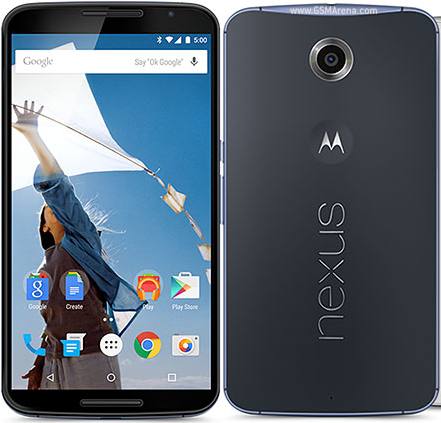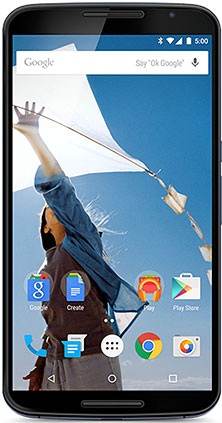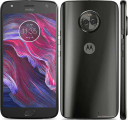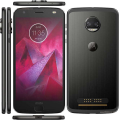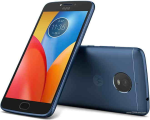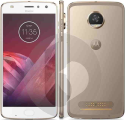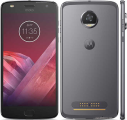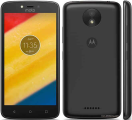Motorola Nexus 6 Prices
Important Note.
- All prices are in Pakistani Rupee (PKR)
- Prices may vary at stores and our effort will be to provide you with the updated prices.
- The latest price of Motorola Nexus 6 was obtained on 17 مئی, 2019. The prices at the original stores had been updated on the respective mentioned dates.
- Find out WhatMobile price has dropped in Pakistan by selecting Notify Price Drop button
- Find out WhatMobile has better specifications by clicking Add To Compare Button find out what Mobile has better reviews by visiting our reviews section
- Find out WhatMobile is cheaper on which retailer by clicking Compare prices from retailers button
Search Terms
- Motorola Nexus 6
Specifications
| GENERAL | |
| 2G Network | GSM 850 / 900 / 1800 / 1900 - all models CDMA 800 / 1900 - XT1103 |
|---|---|
| 3G Network | HSDPA 800 / 850 / 900 / 1700 / 1800 / 1900 / 2100 - XT1100 HSDPA 850 / 900 / 1700 / 1900 / 2100 - XT1103 HSDPA 850 / 900 / 1900 / 2100 - Verizon |
| 4G Network | LTE band 1(2100), 3(1800), 5(850), 7(2600), 8(900), 9(1800), 19(800), 20(800), 28(700), 41(2500) - XT1100 |
| Sim | Nano-SIM - Water resistant |
| Announced | 03/10/2014 |
| Status | Available. Released 2014, November |
| BODY | |
| Dimensions | 159.3 x 83 x 10.1 mm (6.27 x 3.27 x 0.40 in) |
| Weight | 184 g (6.49 oz) - Water resistant |
| DISPLAY | |
| Display Size | 1440 x 2560 pixels, 5.96 inches (~493 ppi pixel density) |
| Resolution | 1440 x 2560 pixels, 16:9 ratio (~493 ppi density) |
| MultiTouch | Yes |
| Protection | Corning Gorilla Glass 3 |
| SOUND | |
| AlertTypes | Vibration; MP3, WAV ringtones |
| LoudSpeaker | Yes, with stereo speakers |
| 3.5mm jack | Yes - Active noise cancellation with dedicated mic |
| MEMORY | |
| CardSlot | NO |
| Internal | 32 GB, 3 GB RAM |
| DATA | |
| GPRS | Yes |
| EDGE | Yes |
| Speed | HSPA 42.2/5.76 Mbps, LTE Cat4 150/50 Mbps or LTE Cat6 300/50 Mbps |
| WLAN | Wi-Fi 802.11 a/b/g/n/ac, dual-band, Wi-Fi Direct, DLNA, hotspot |
| Blue Tooth | 4.1, A2DP, LE |
| NFC | Yes |
| USB | microUSB 2.0 (SlimPort), USB Host |
| CAMERA | |
| Camera Primary | 13 MP, 4128 x 3096 pixels, autofocus, optical image stabilization, dual-LED (ring) flash |
| Camera Features | Dual recording, geo-tagging, touch focus, face detection, photo sphere, panorama, HDR |
| CameraVideo | 2160p@30fps, optical stabilization |
| CameraSecondary | 2 MP |
| FEATURES | |
| Processor Cores | Quad-Core |
| OS | Android OS, v5.0 (Lollipop) |
| CPU | Quad-core 2.7 GHz Krait 450 |
| Sensors | Accelerometer, gyro, proximity, compass, barometer |
| Messaging | SMS(threaded view), MMS, Email, Push Mail, IM |
| Browser | HTML5 |
| Radio | No |
| GPS | Yes, with A-GPS, GLONASS |
| Java | No |
| Colors | Midnight Blue, Cloud White |
| Others | - Qi wireless charging - MP4/H.264 player - MP3/WAV/eAAC+ player - Photo/video editor - Document editor |
| BATTERY | |
| Battery | Non-removable Li-Po 3220 mAh battery |
| StandBy | Up to 330 h |
| TalkTime | Up to 24 h |
| MISC | |
| SARUS | 1.47 W/kg (head) 0.93 W/kg (body) |
Reviews

I used to make fun of phablets–smartphones with screens of 5.5-inches are larger that never seemed to know whether they wanted to be a phone or a tablet. But after a few years of a spate of excellent Android phablets–and the iPhone 6 Plus–I’ve slowly become converted.
OnePlus’ entire business model is kind of similar to what Google used to do with its Nexus handsets. High-end specs at a low, low price. Punters love it too, which is why OnePlus has already posted 1 million invitations for its next-gen, OnePlus Two handset.
Google did its Nexus release very differently in 2014; the handset was more premium and priced like a normal flagship handset. The good ‘ol Nexus USP of cheap ass prices and great hardware was over, Google relented, and began going after the networks (apparently consumers prefer paying more for handsets on contract).
The Nexus 6 was still a fine handset. But it wasn’t without its faults: the camera was still pretty ropey, the battery wasn’t great and its size -- with a 6in display -- will not be to everyone’s tastes.
On the Android side, two of the best phablets out there are the Nexus 6 and the brand new OnePlus 2. The Nexus 6 has been around since the end of last year, and has been one of the more popular phablets. But now that the OnePlus 2 is out, does the Nexus 6 still have a chance? We took at look at both phablets to see how they compare.
Nexus 6 vs OnePlus 2: Specs
Nexus 6
-
Screen size: 5.96 inch 2560x1440 pixels at 493 ppi
-
Weight: 184 grams
-
Dimensions: 159.3 x 82.9 x 10 mm
-
Processors: Qualcomm Snapdragon 805 processor with 2.7GHz quad-core CPU
-
RAM: 3GB
-
OS: Android 5.0 Lollipop
-
Storage: 32 or 64GB
-
Sensors: Accelerometer, Gyroscope, Magnetometer, Barometer and Ambient Light
-
Battery: 3220 mAh lithium polymer battery, Qi wireless charging
-
Cameras: 13 Megapixel rear camera, 2 Megapixel front camera
OnePlus 2
-
Screen size: 5.5 inch 1920x1080 pixels at 401 ppi
-
Weight: 175 grams
-
Dimensions: 151.8 x 74.9 x 9.9mm
-
Processors: Qualcomm Snapdragon 810, octa-core 64-bit
-
RAM: 3GB (on 16GB model) or 4GB (on 64GB model)
-
OS: OxygenOS based on Android 5.1
-
Storage: 16 or 64GB
-
Sensors: Fingerprint, Accelerometer, Gyroscope, Proximity and Ambient Light
-
Battery: 3,300 mAh lithium polymer battery
-
Cameras: 13 Megapixel rear camera with optical image stabilization, 5 Megapixel front camera
-
Connectivity: 3G, 4G, 802.11a/b/g/n Wi-Fi, Bluetooth 4.0, NFC
For a phone that is almost 9 months older the Nexus 6 holds up surprisingly well in a few internal space departments when compared to the newer OnePlus 2. For starters, it comes in 32 or 64GB storage options. That compares to the OnePlus 2’s 16 or 64GB options. In 2015, the bare minimum any phone should start at is 32. On the RAM front, the Nexus 6 has a respectable 3GB as does the 16GB OnePlus 2. But the OnePlus 2 pulls out a win with the 64GB model, giving it 25% more RAM at 4GB.
On the battery front, the battery in both phone are nearly the same. The OnePlus 2 slightly edges a win here at 3,300 mAh versus the 3,220 mAh Nexus 6’s battery. An area the Nexus 6 does at first appear to win is in the sensor department. In addition to the Accelerometer, Gyroscope, Magnetometer, and Ambient Light sensors both phones have the Nexus 6 also has a Barometer, nice for those that light to track their vertical stair climbs. But that’s before you consider the OnePlus 2 biometric fingerprint scanner–unlocking your phone with a print is almost a necessity in 2015–and the Nexus 6 doesn’t offer that.
The major area the Nexus 6 fall behind in the specs department, however, is the CPU. The Nexus 6 offers the Snapdragon 805 quad core CPU with 32-bit architecture. That can’t hold a candle to the Snapdragon 810 64-bit octacore CPU found in the OnePlus 2.
Nexus 6 vs OnePlus 2: Design
Given its bigger screen (see below) it's no surprise that the Nexus 6 is physically larger at 159.3 x 82.9 x 10 mm versus the OnePlus 2’s 151.8 x 74.9 x 9.9mm body. It’s also a bit heavier at 184 grams versus the OnePlus 2’s 175 grams. But when you get down to the aesthetic design, the two phones aren’t much different. Both feature a curved plastic back that fits nicely in the hand. They also both feature a metal frame running around the body, which gives each phone a more sophisticated look.
But for those that want a little more originality in their smartphone design, the OnePlus 2 is the winner here. The default look is Sandstone Black, but thanks to the OnePlus StyleSwap service you can swap out the standard backplate with a custom one, like Bamboo, Black Apricot, Rosewood and Kevlar.
Nexus 6 vs OnePlus 2: Display
There’s no doubt about it, the Nexus 6’s display still kills the OnePlus 2’s display. The Nexus 6 features a whopping 5.96-inch display with a 2560x1440 resolution at 493 pixels per inch. Compare that to the 5.5-inch display of the OnePlus 2 and its 1920x1080 resolution screen at 401 pixels per inch. Hands down, the Nexus 6 display kills it.
Nexus 6 vs OnePlus 2: Camera
The camera is another area where the two phablets are close at first look. Both phones have a 13MP rear camera with optical image stabilization. The rear camera in the OnePlus 2 can also capture 720p slo-mo video at up to 120 frames per second and features a new low-light sensor for better night snaps. More bad news for the Nexus 6: the OnePlus 2 has a front camera over twice as good. Where the Nexus 6 has a paltry 2MP front camera, the OnePlus 2 has a 5MP front camera.
Nexus 6 vs OnePlus 2: Software
The OnePlus 2 uses the Android 5.1 OxygenOS. OnePlus has tweaked OxygenOS a bit, but it's still faithful to Material Design–which is something Android aficionados should love. As for the Nexus 6–no surprise since it’s in part designed by Google, it uses a pure version of Android 5.0.
Nexus 6 vs OnePlus 2: Price and Verdict
Orders for the OnePlus 2 will go live on August 11 and will again be done as an invite-only selection. The 16GB storage base model of the OnePlus 2 is priced at £239 while the higher-end 64GB option costs £289. The Nexus 6 costs £479 for the 32GB model and £549 for the 64GB model.
While the Nexus 6 does have the superior display and the bigger screen, that’s all it offers over the OnePlus 2. The OnePlus 2 is packed with features the Nexus 6 lacks: the fingerprint scanner, a better front camera, an octa core 64-bit chipset, and even a USB Type C connection. And it does all this coming in at several hundred pounds cheaper than the Nexus 6. If the internal specs and not the screen are the most important part of a smartphone for you, then the OnePlus 2 is the one to choose.
Write Your Own Review
My Recent Reviews
- Be first to post review for this product.
comments powered by Disqus




